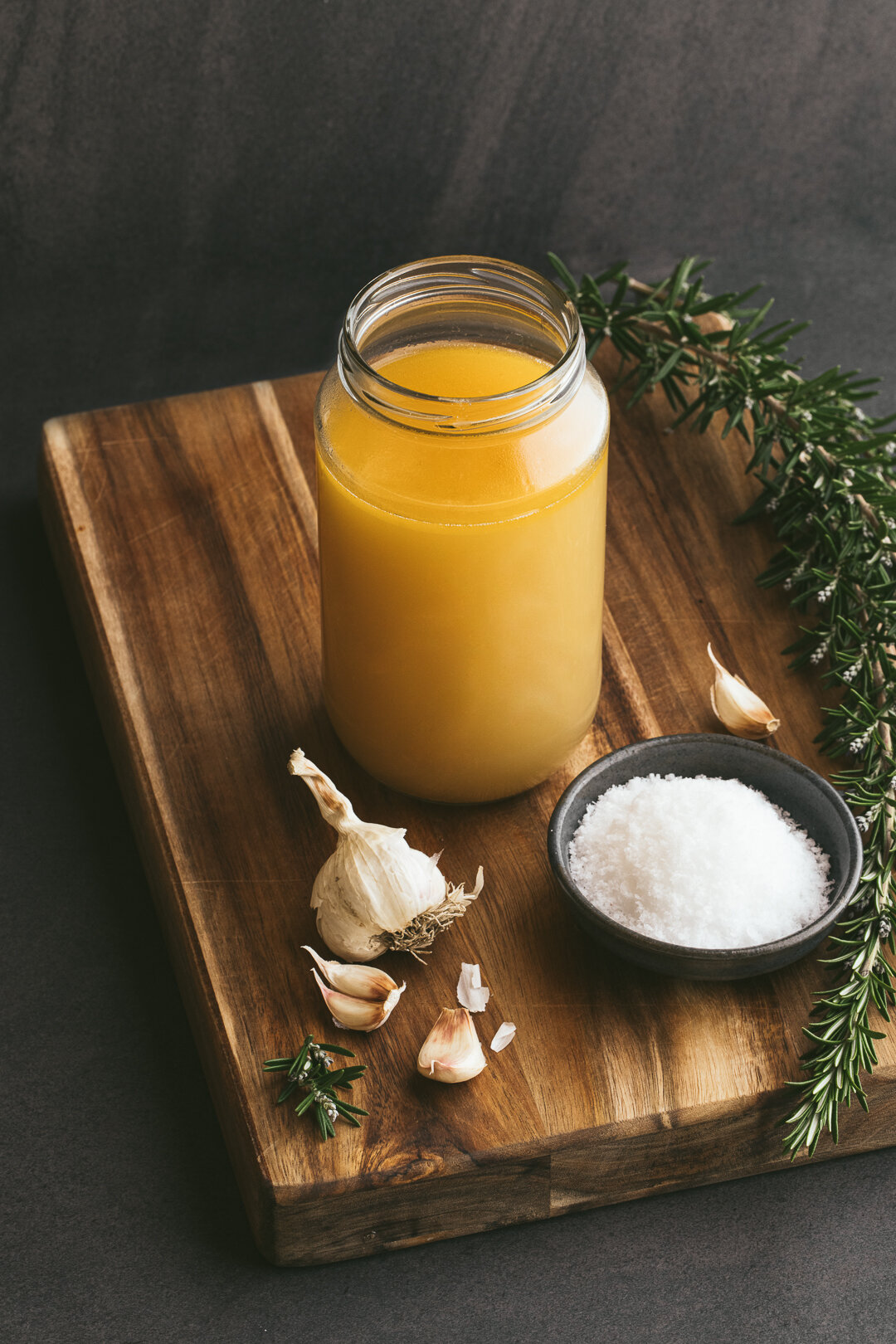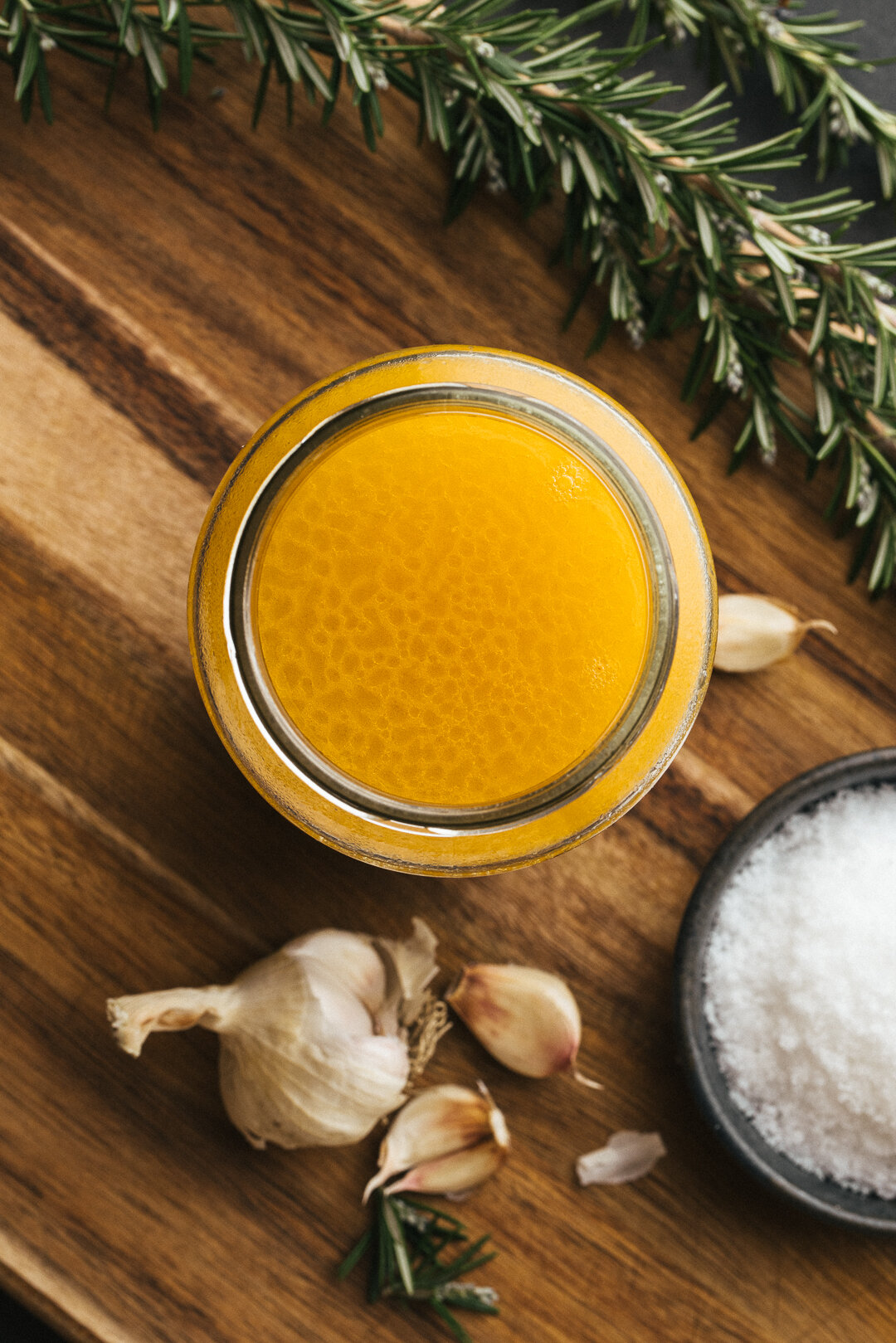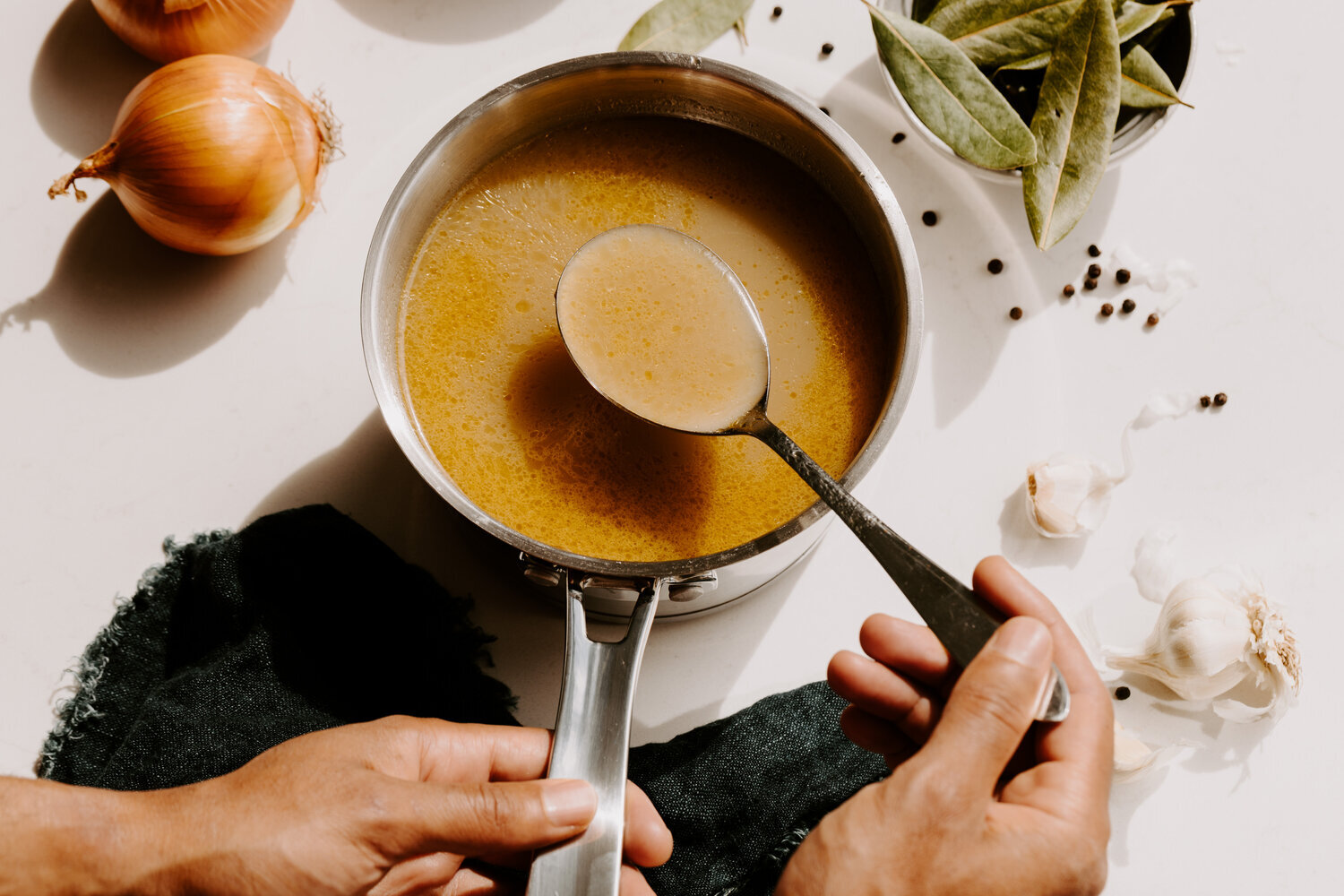Easy Chicken Bone Broth
Bone broth is one of the most nutrient dense foods we can consume. It’s the ultimate food when it comes to improving digestion, sleep, immunity, skin, gut health as well as fertility in every aspect - from preconception to conception to pregnancy and postpartum. It’s loaded with every amino acid and mineral our body needs, along with high quality fats, protein + collagen. The most beautiful thing about bone broth is the fact that it’s so easily assimilated in the body — meaning, the body naturally absorbs all the goodness found in broth without working to absorb it. So consuming broth is a great way to help to increase your nutrient uptake.
I personally don’t like to cook bone broth for 24 hours like many other recipes out there because #1 my electricity bill would be ridiculous and #2 my partner doesn’t enjoy the whole house smelling like bone broth haha. So that’s why I use the below method when making bone broth - it’s quick, it’s easy and it makes the most gelatinous bone broth. The key is to make sure you’ve used enough bones and to allow the liquid to evaporate/ concentrate down while the broth is cooking, otherwise it won’t be very gelatinous once it sets in the fridge.
Tip - we save all of our bones from whole roasted chickens, chicken wings, drumsticks and frames. We have a container in the freezer to store these leftover bones in. Once it’s full, we use them to make a batch of bone broth.
INGREDIENTS
Leftover chicken bones from chicken wings, drumsticks, whole roasted chicken and/ or frames (they can be pre-cooked / roasted or raw, or a mix)
A big pinch or two of quality salt
2 Tbsp of apple cider vinegar
Aromatics of your choice: sage, rosemary, thyme, bay leaves, peppercorns, garlic cloves, ginger, seaweed (this is optional, although delicious)
INSTRUCTIONS
Add the frozen bones to your stockpot (I like to make sure it’s at least ¾ full of bones). Cover in filtered water. Add the apple cider vinegar + a generous pinch of salt and a few bay leaves or aromatics of choice.
Place the lid on top and bring it up to a medium simmer. Cook the broth on the stovetop at a medium simmer until the water has reduced by half (this usually takes about 2-2.5 hours on my stove top). I recommend leaving the lid ajar as you want the water to evaporate and concentrate so it will go beautifully rich and gelatinous.
Add more filtered water until the pot is 3/4 full and repeat this process and reduce the liquid by half again (the cooking time will be approximately 4-5 hours in total depending in the size of your stock pot and generally induction stove tops are a wee bit faster).
When the broth has reduced and concentrated, remove the broth from the heat.
Strain the liquid through a sieve and collect the bone broth into a large bowl. Once the broth has cooled down, carefully pour it into a glass container or jar and store it in the fridge. Please note you can re-use these bones once more (see my tips below).
How To Make A Second Batch of Bone Broth From The Same Bones
I often use bones more than once to make multiple pots of bone broth, especially if it’s a big batch of bones and fills the whole pot. Remouillage is the name of this frugal French cooking method. It’s guaranteed to save you a lot of money over time! Typically, I use poultry bones and harder bones such as beef, lamb, venison or pork twice before throwing them out.
INSTRUCTIONS
Once you’ve poured off and collected the liquid from the first batch of bone broth, leave the bones in the stock pot. Refill the stock pot up with filtered water, add more salt, ACV and aromatics of choice.
Repeat the same steps as above and then you’ll have a second batch of bone broth using the same bones.
The second batch of bone broth may not be as gelatinous as the first one, but it’s still incredibly nutritious and just as beautiful to use in spaghetti sauces, curries, gravy, butter chicken, cook your rice in it, or drink it warm in a mug.
For more information + bone broth tips, read this blog post ‘How To Make Belly Soothing Bone Broth’. This post also includes a Q&A that answers commonly asked questions I get asked about bone broth.







